
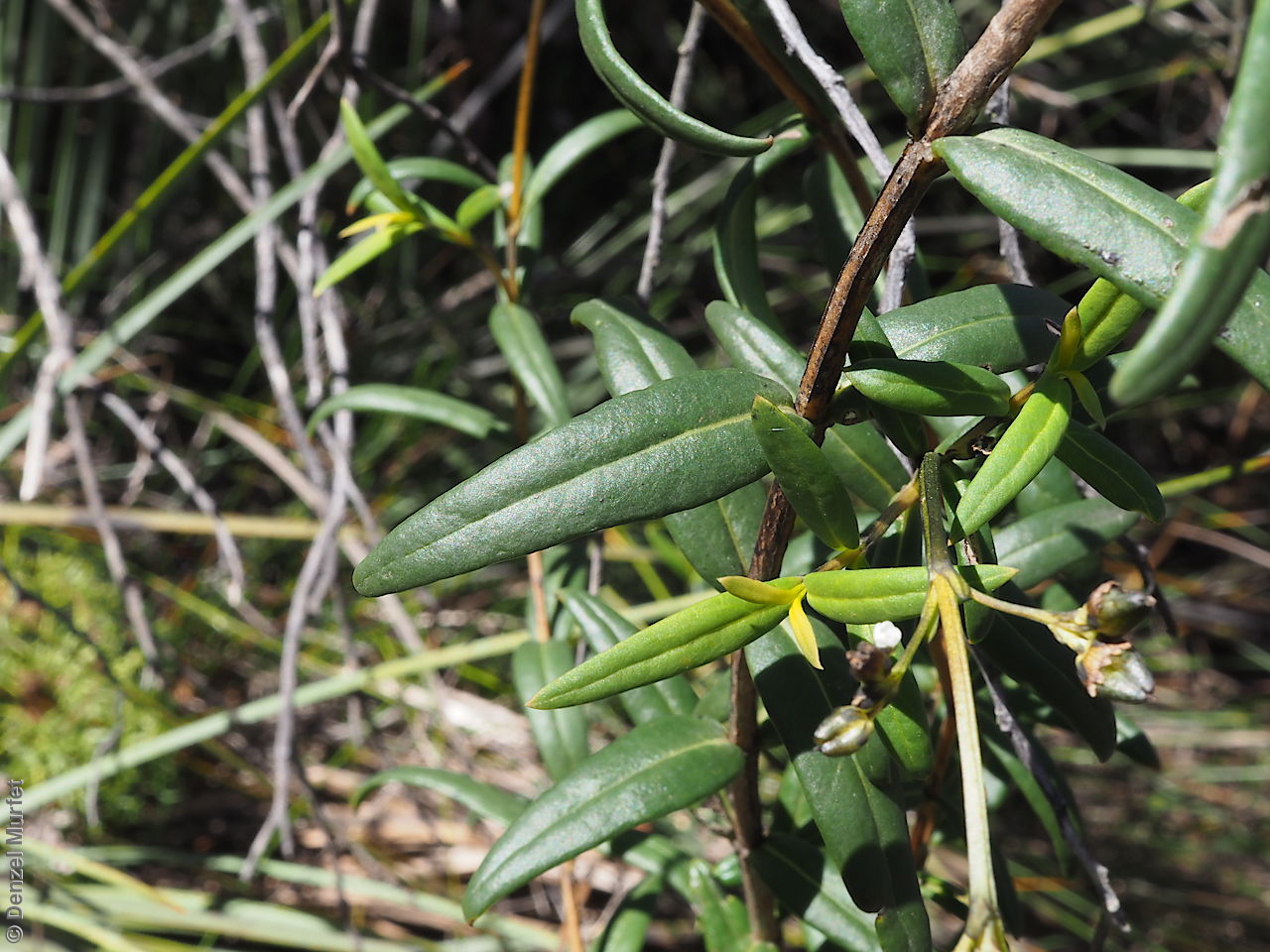
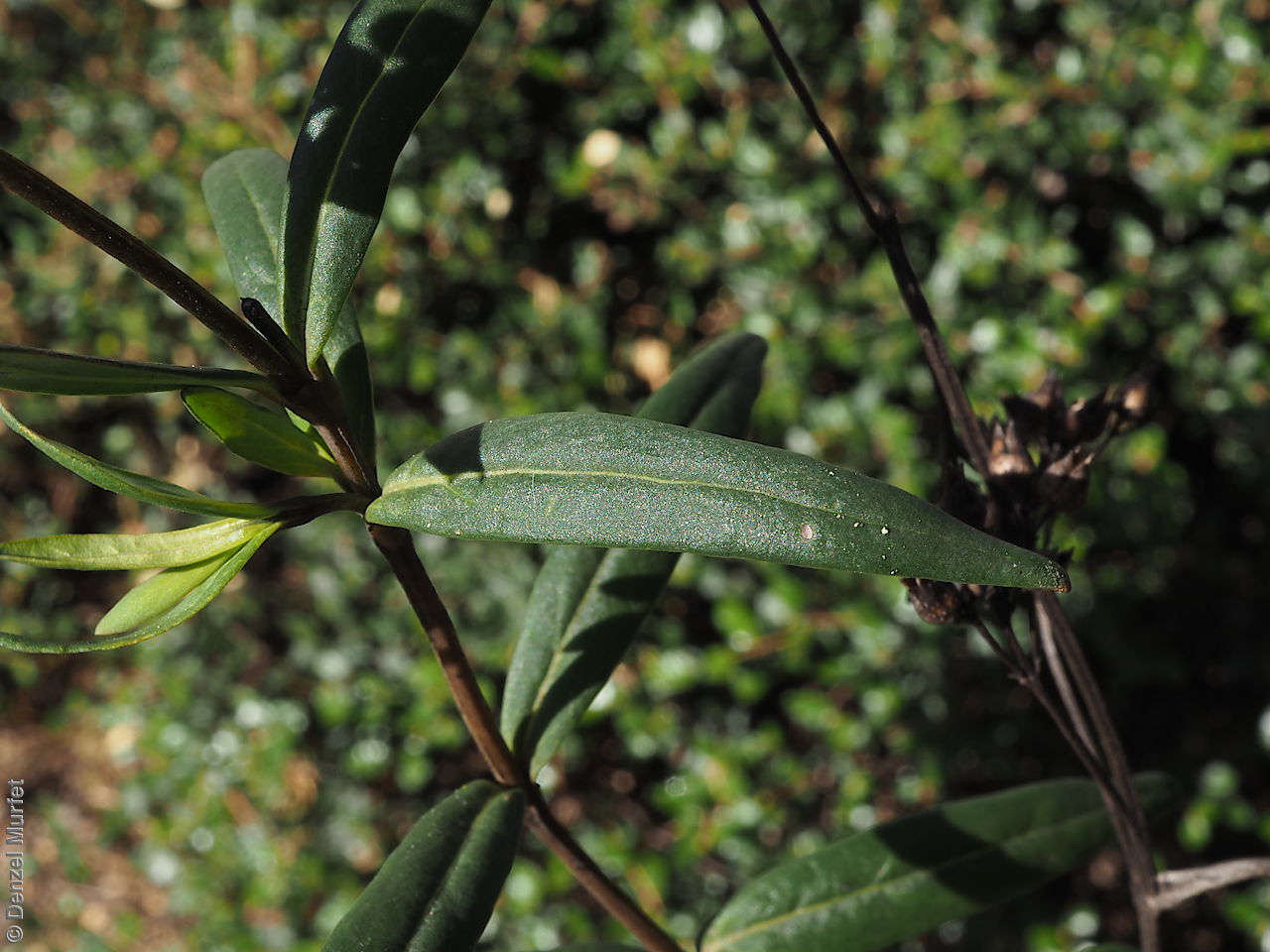


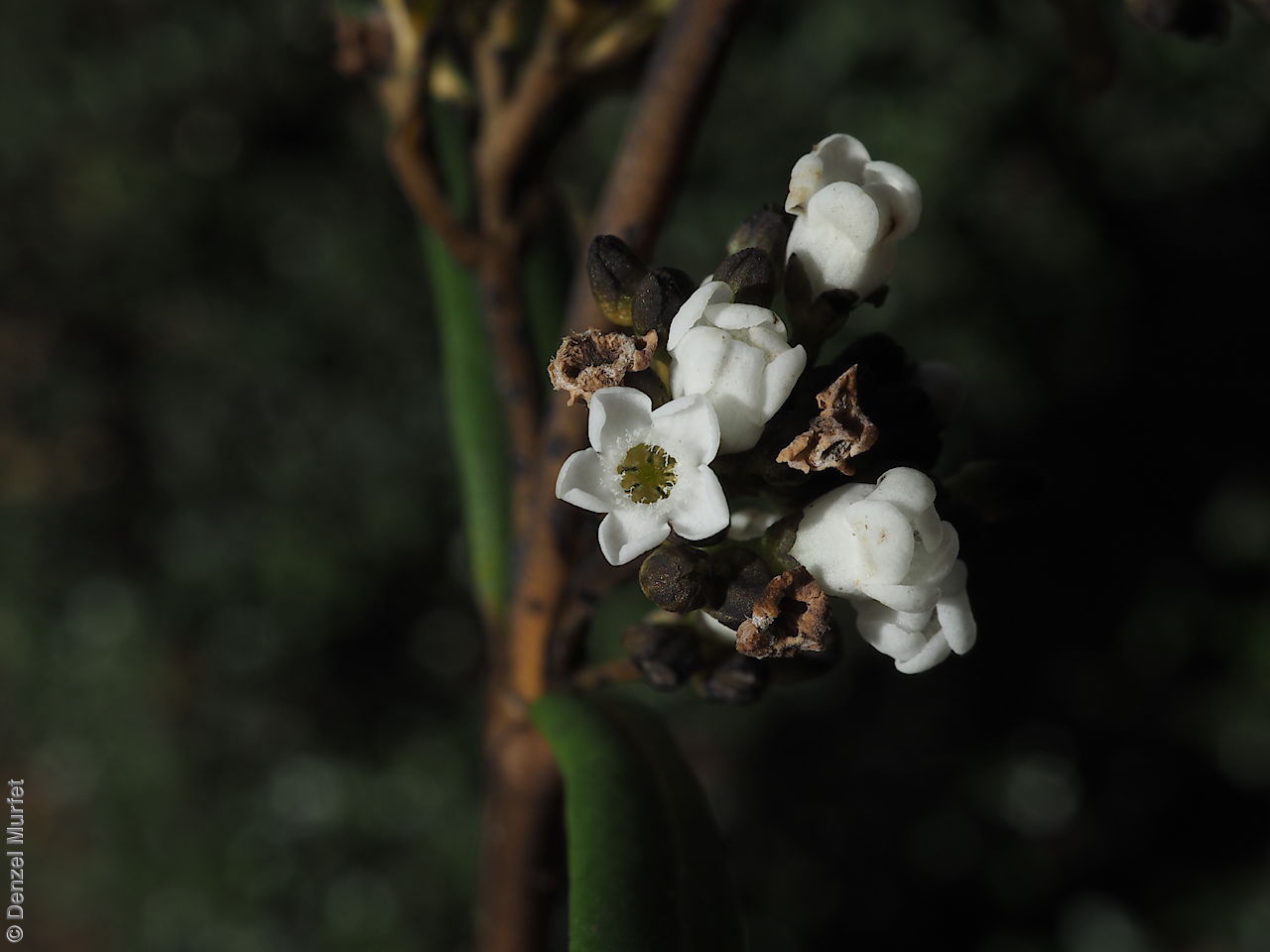
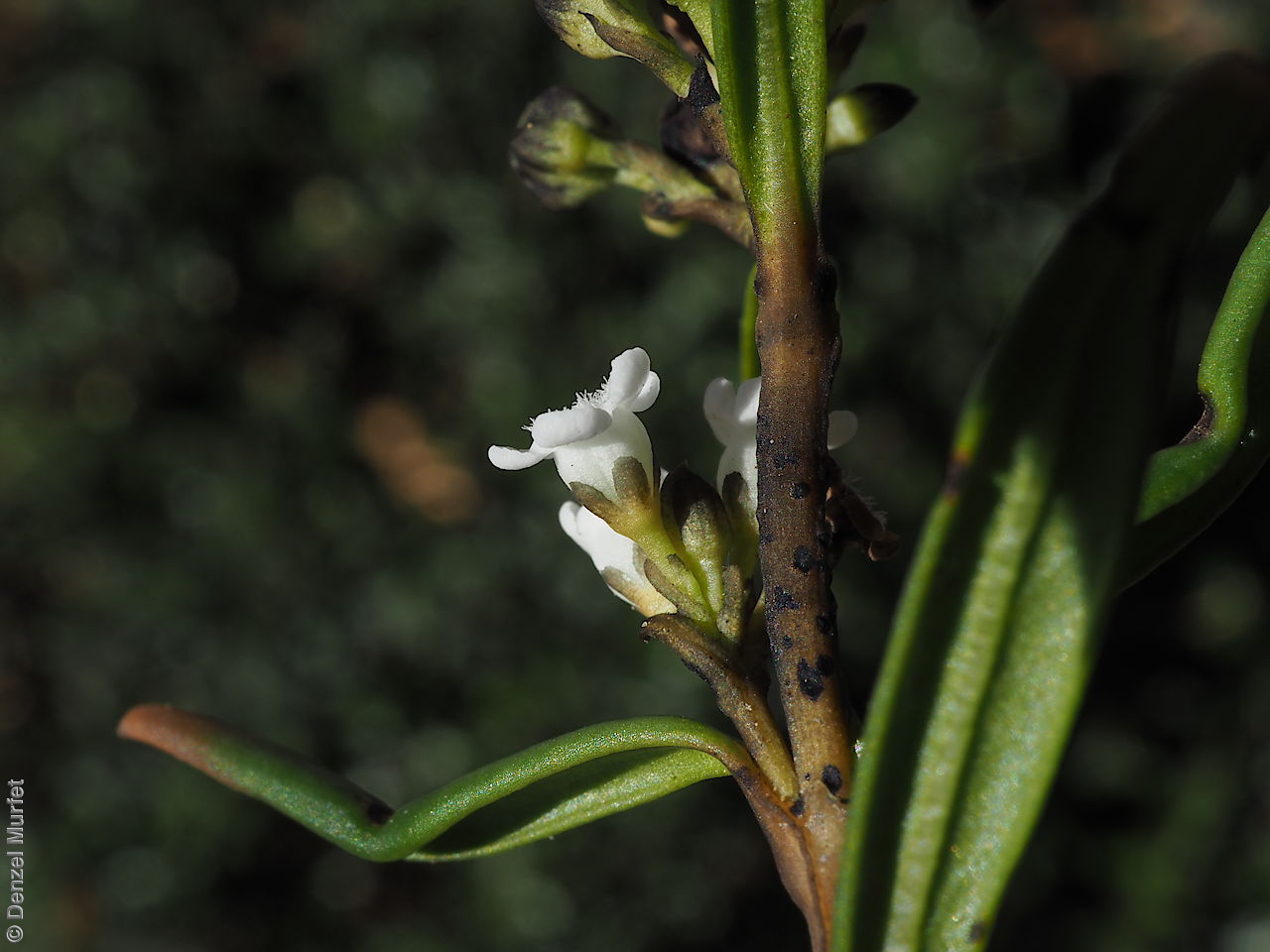


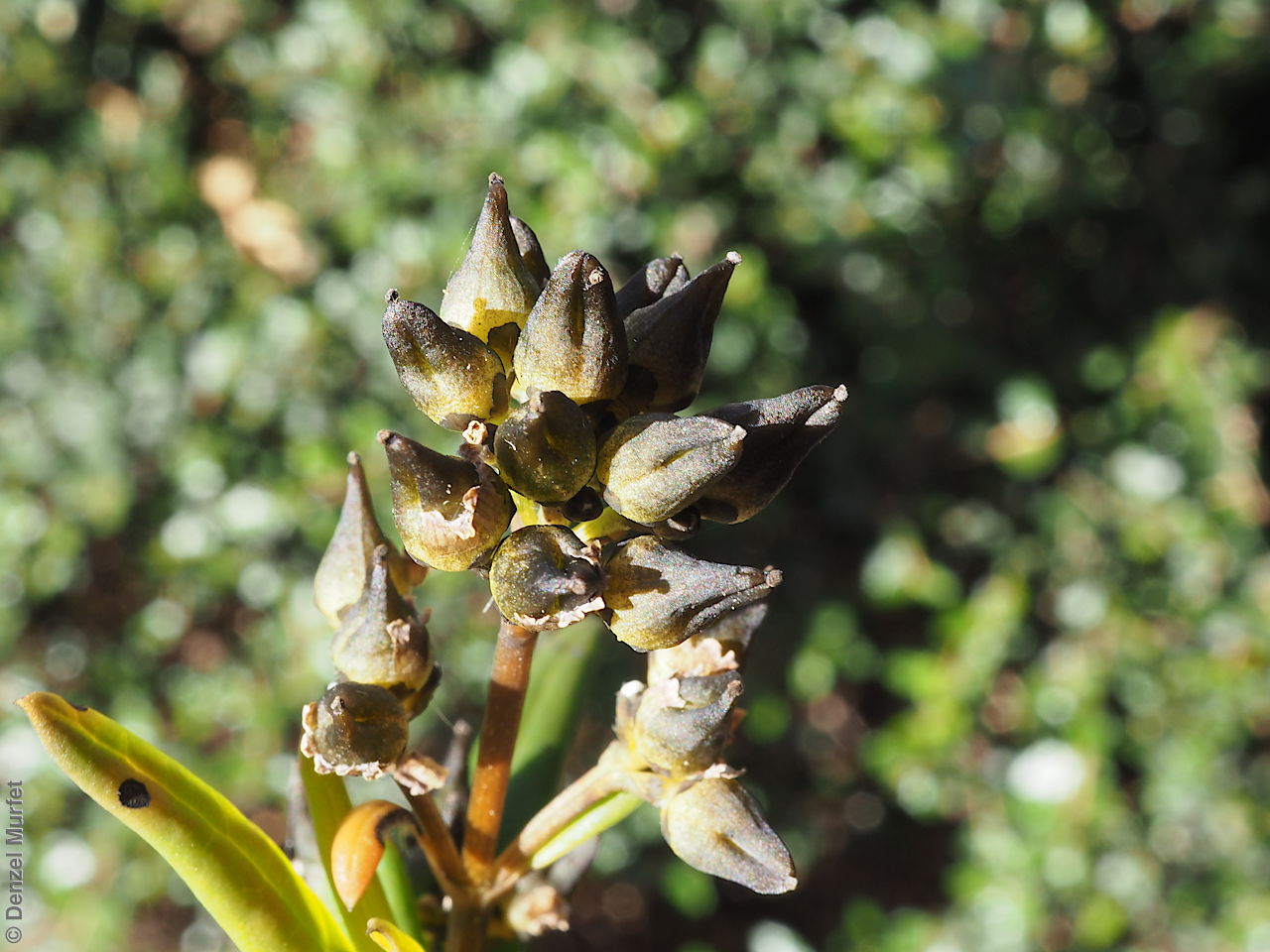

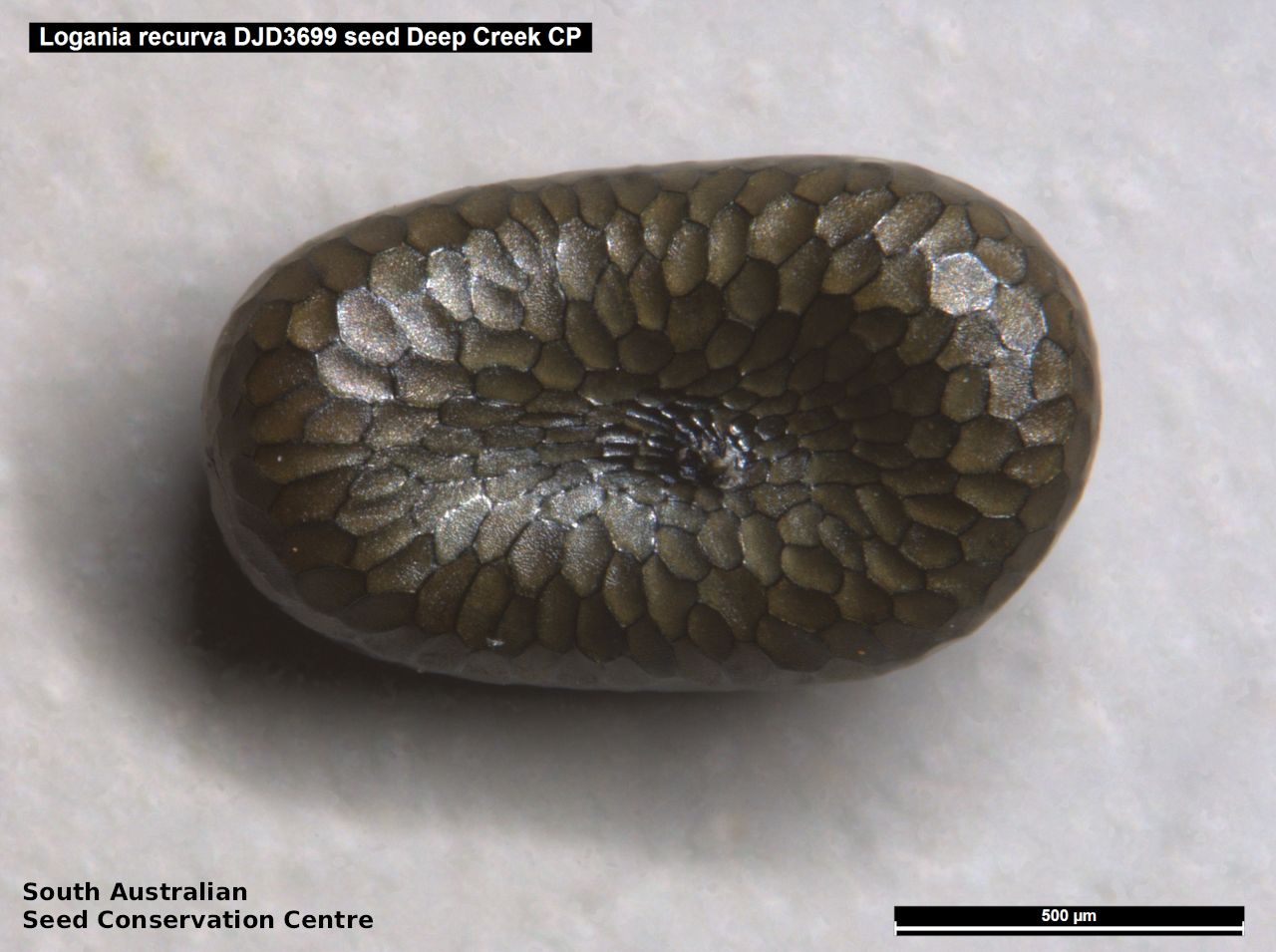
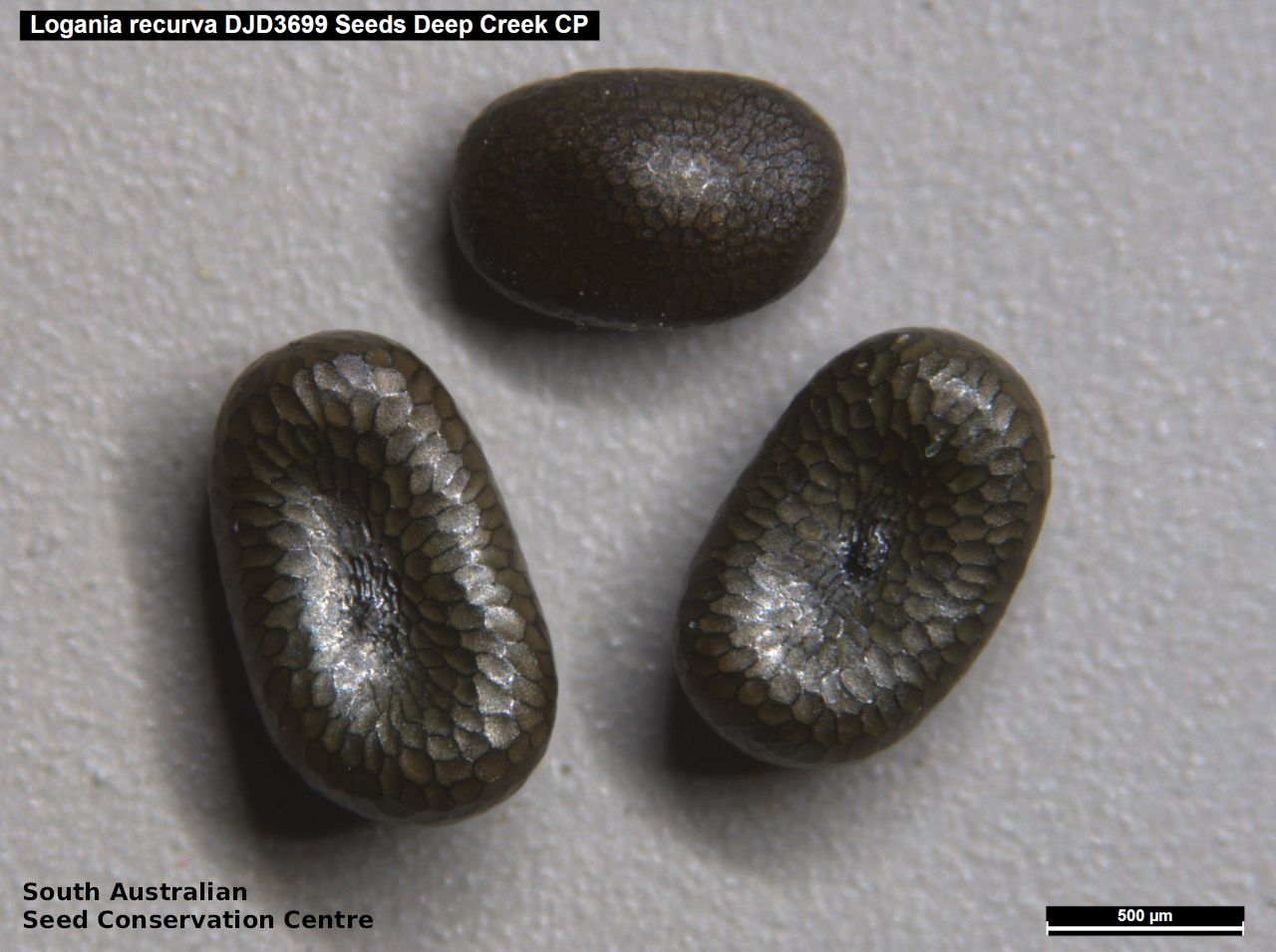
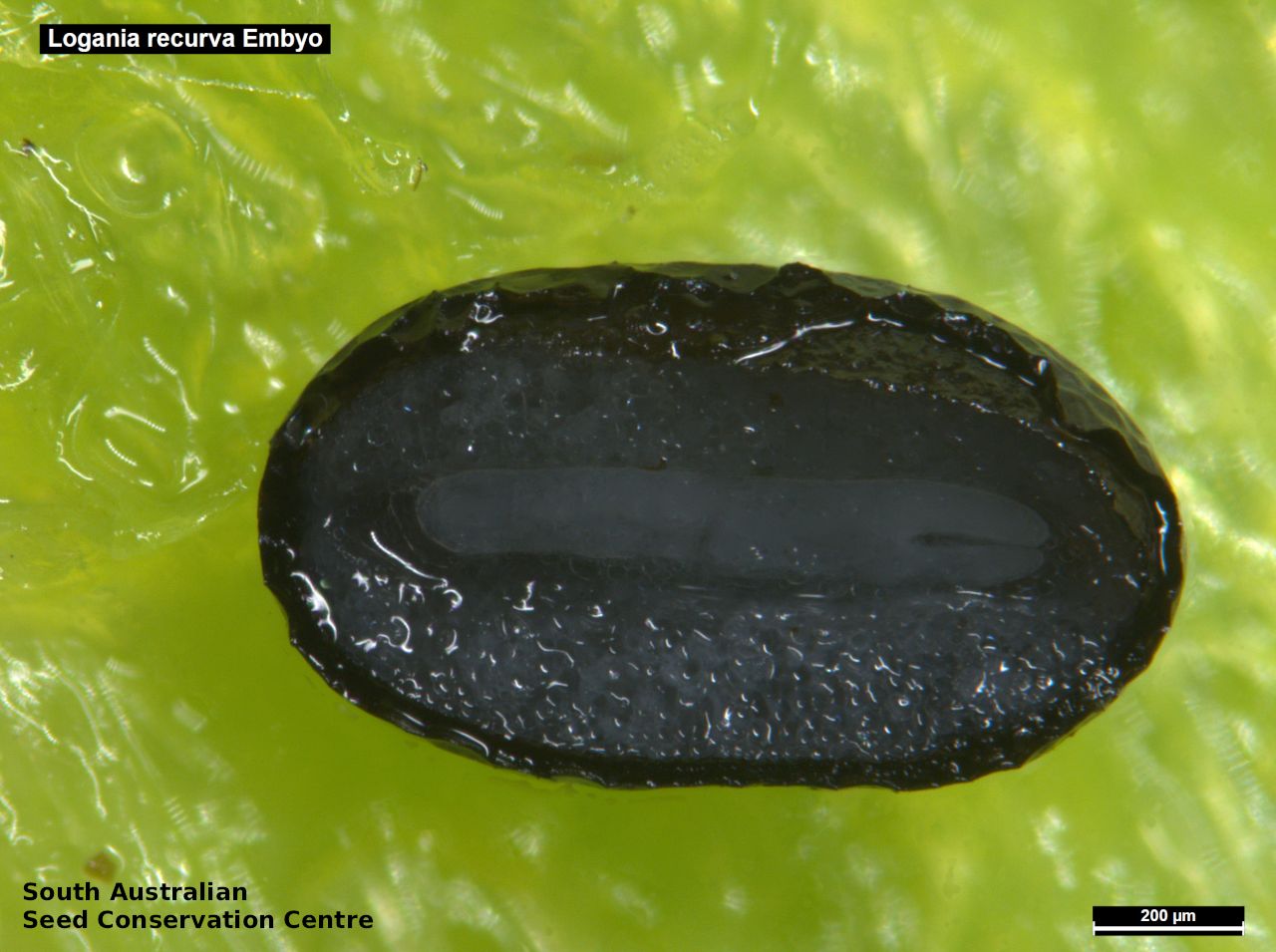
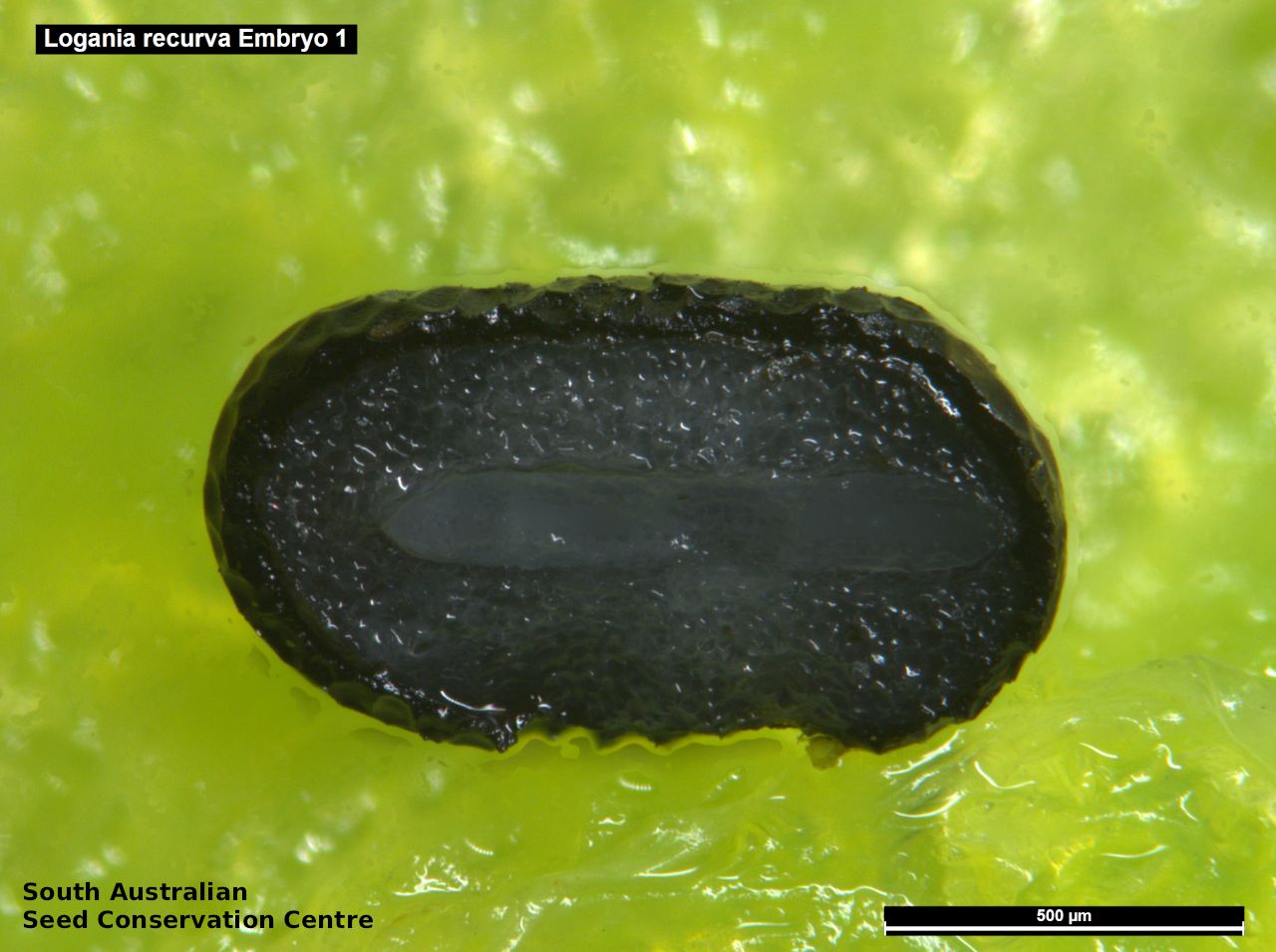
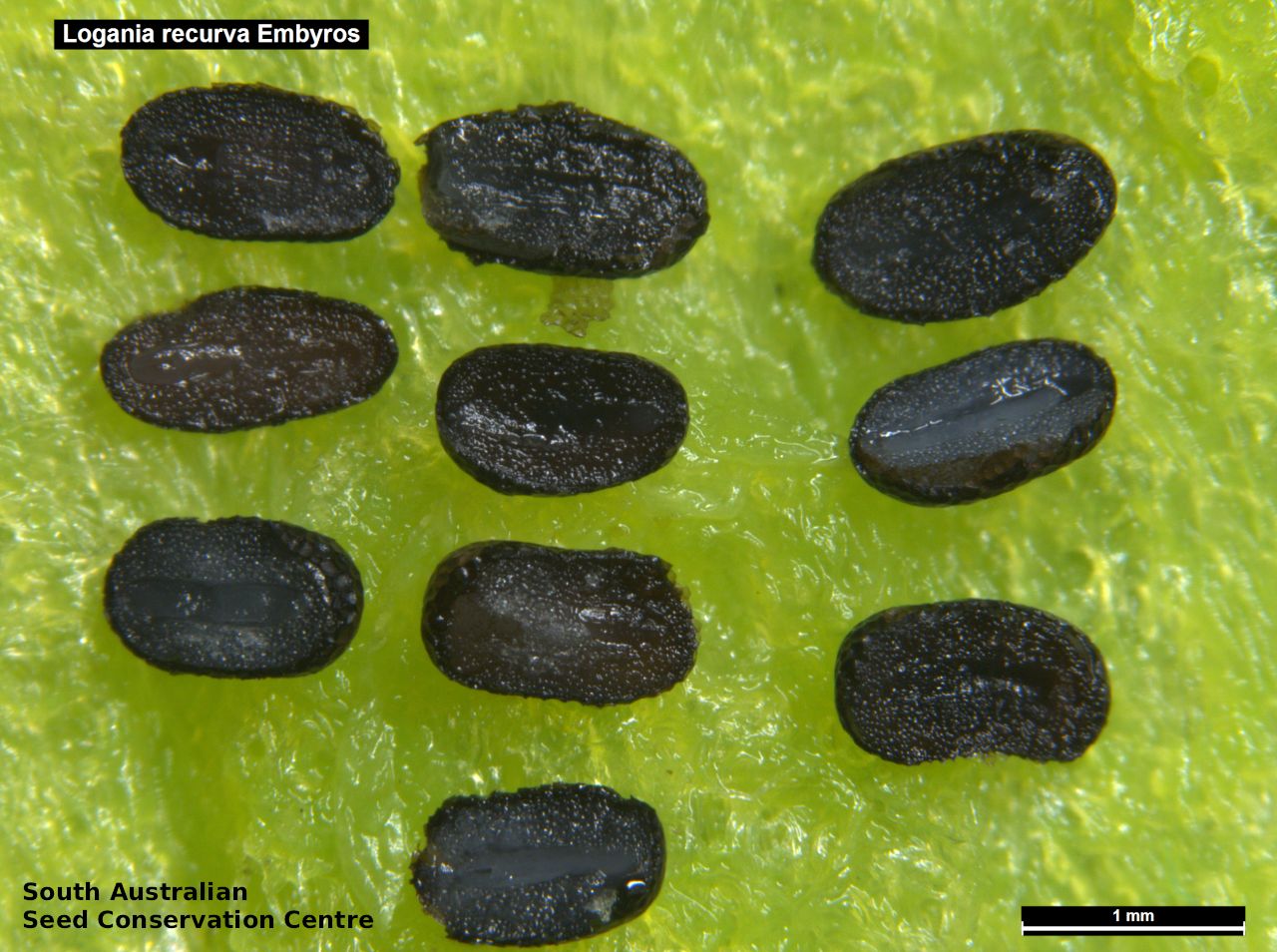
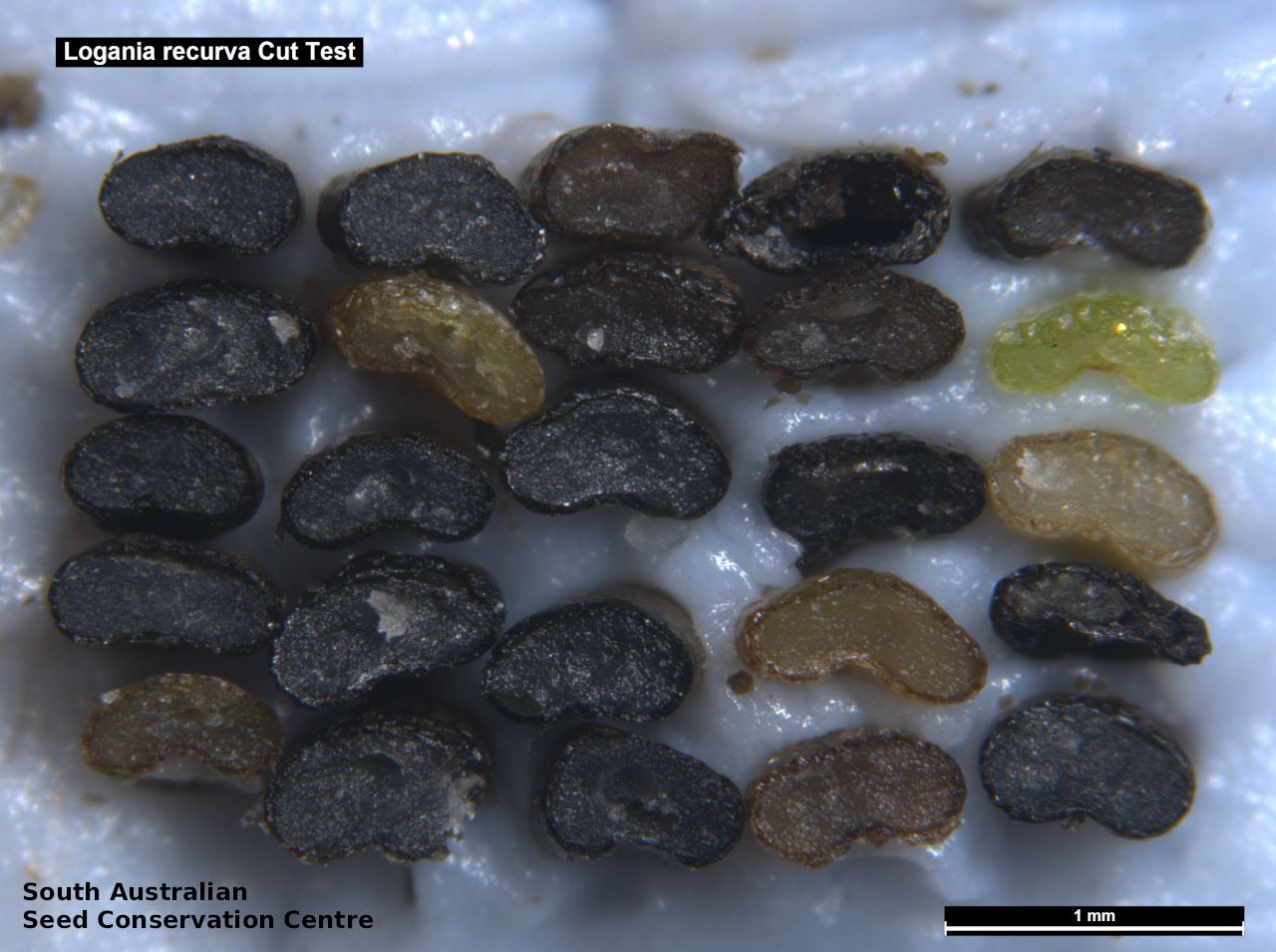
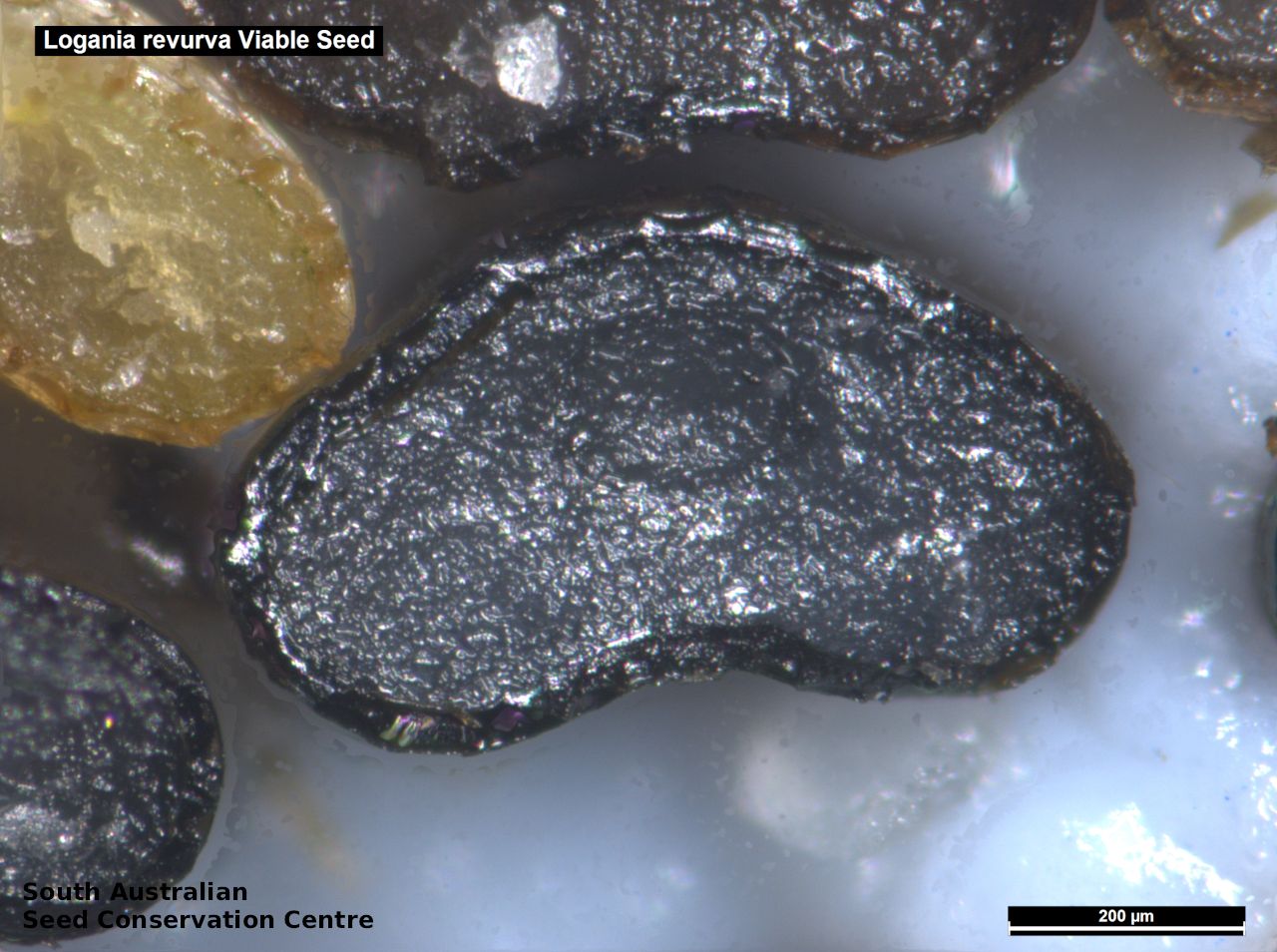
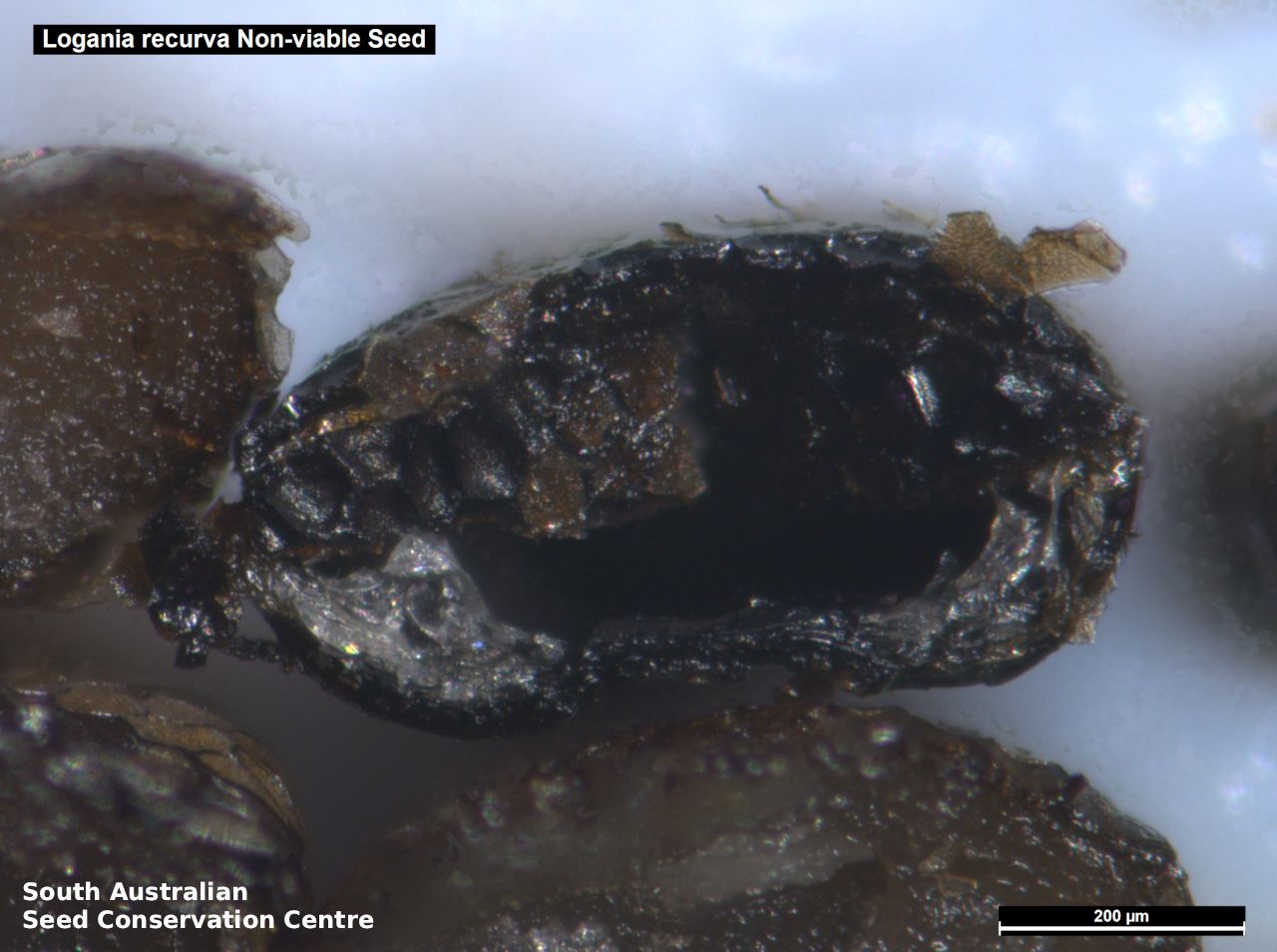

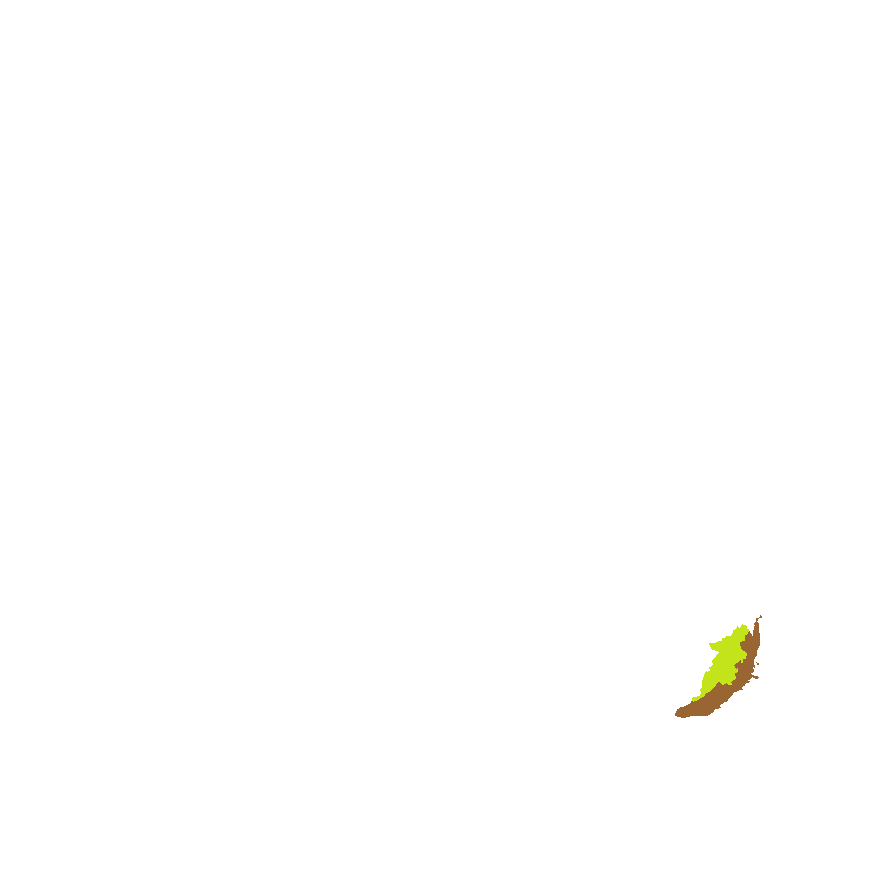
Botanical art
Prior names
Logania longifolia var. subsessilis
Common names
Recurved Logania
Etymology
Logania, named after James Logan (1674-1751), an Irish born botanist who emigrated to North America, became Governor of Pennsylvania and wrote a book on the sexuality of plants. Recurva, from the Latin 'recurvare', meaning to bend back, referring to its recurved leave margins.
Distribution and status
Endemic to South Australia and found in the southern Mount Lofty Ranges growing in low Eucalyptus obliqua forest with heath understorey. Native. Uncommon in South Australia.
Herbarium regions: Southern Lofty, Green Adelaide
AVH map: SA distribution map (external link)
Plant description
Erect shrub to 1 m high; dioecious; stems glabrous to minutely hairy. Leaves linear to narrowly ovate, narrowing at the base, to 40 mm long and 8 mm wide; glabrous to minutely hairy,;margins recurved to revolute. Inflorescence in terminal compact clusters with white unisexual flowers. Flowering between August and October. Fruits are orange-brown ovoid capsule to 6 mm long and 4.5 mm wide. Seeds are shiny black convex seed to 1.3 mm long and 0.8 mm wide, with a reticulate surface. Seed embryo type is linear, fully-developed.
Seed collection and propagation
Collect seeds between October and December. Collect maturing capsules that are fat, turning orange-brown in colour, have not opened and contain hard black seeds. Place the capsules in a tray and leave to dry for one to two weeks to split. Rub the capsules gently with a rubber bung to dislodge the seeds. Use a sieve to separate the unwanted material. Store the seeds with a desiccant such as dried silica beads or dry rice, in an air tight container in a cool and dry place. From three collections, the seed viability was high, ranging from 85% to 95%. Seeds have morpho-physiological dormancy. Germination was enhanced after treatment with fire cues (dry heat and smoke water) and gibberellic acid.
| Location | No. of seeds (weight grams) | Number of plants | Date collected | Collection number Collection location | Date stored | % Viability | Storage temperature |
|---|---|---|---|---|---|---|---|
| BGA | 8,100 (1.95 g) | 30 | 3-Dec-2007 | RJB74289 Southern Lofty | 19-Sep-2008 | 95% | -18°C |
| BGA | 217,800 (47.03 g) | 200+ | 30-Nov-2017 | TST1388 Southern Lofty | 30-Jun-2018 | 90% | -18°C, -80°C |
| BGA | 34,000 (6.44 g) | 30+ | 30-Nov-2017 | DJD3699 Southern Lofty | 24-Apr-2019 | 85% | -18°C, -80°C |
Number of plants: This is the number of plants from which the seeds were collected.
Collection location: The Herbarium of South Australia's region name.
% Viability: Percentage of filled healthy seeds determined by a cut test or x-ray.